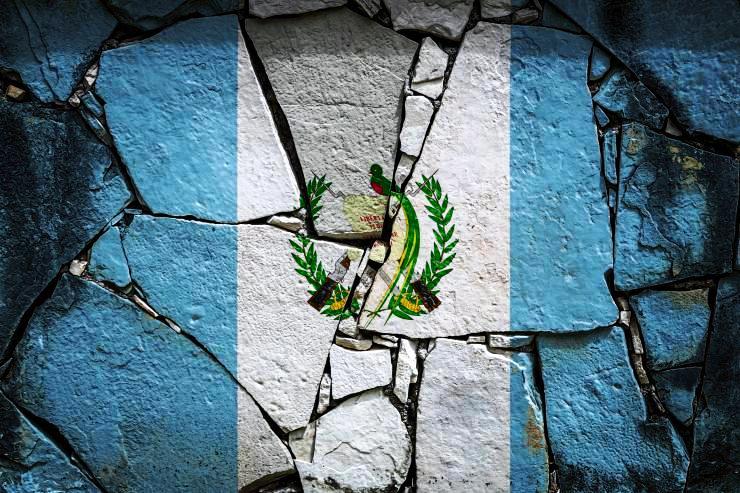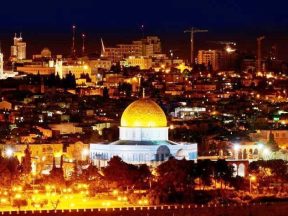Guatemala. A Wounded Country.

A past full of violence and abuse. Drug trafficking, corruption, weak or non-existent institutions. Meanwhile, next June, the country will go to the polls for the general elections.
Guatemala constitutes the northern edge of the Central American area nestled between Mexico, Belize, El Salvador, and Honduras with which it shares borders to the north and northwest, respectively, also, east and southeast. The country also enjoys two important outlets to the sea: to the west on the Pacific while to the east on the Caribbean basin, for a total coastal area of 400 kilometres. This factor which, due to its importance, is also symbolized in the national flag with a vertical white band flanked by two other light blue bands.

Over the course of history, the location area has favoured the numerous upheavals that have upset the country because it is considered of crucial strategic importance since the time of its discovery. It constitutes an isthmus, or contact area, between the two large masses, the northern and southern part of the American continent. Above all, the closeness and economic-strategic interests of the major world power – the United States – and those of various oligarchies which have never allowed the definition of grounds for institutional confrontation, are incumbent on the region.
In addition to the coastal strip, from a geographical point of view, Guatemala is also characterized by the mountain ranges of the Sierra Madre, which run along the central part with peaks, among the highest in all of Central America, whose height exceeds 4,000 metres. Among these is that of Tajumulco which is also one of the many active volcanos present in Guatemalan territory and, at 4,220m, is the highest peak in the country. Guatemala, in fact, has one of the most important volcanic complexes in Central America which also includes the Acatenango at 3976m, while in the southern area, there is the largest number of extinct volcanoes. In the northern part, more precisely in the area between Mexico and Belize, there is a vast plain dotted with some limited hills and large wooded extensions which, like the southern part of the coastal strip facing the Pacific, is also flat. To the north, however, there is also an arc of ancient rocks, covered by marine sediments, belonging to the Mesozoic and Cenozoic eras.
The country is also very rich in watercourses, which flow among the wide valleys present in the central part of the country and into the two oceans, including the Río Chixoy, the Motagua and the Usumacinta, and lake basins including Lake Izabal (590 Km²), about thirty kilometres away from the Atlantic, Lake Petén Itzá (99 Km²) and Lake Atitlán (130 Km²) which is of volcanic origin and still active.

Guatemala has one of the most important volcanic complexes in Central America. (Photo Pixbay)
Also belonging to the country are some islets present both in the waters of the bordering oceans and in some lakes, all of a very small size, less than one square kilometre.
From a historical point of view, Guatemala has been for millennia the cradle of the Mayas whose testimony is still alive among the inhabitants of the country, despite the terrible persecutions suffered by this population over the centuries, but also in the archaeological works bequeathed and deriving from their high architectural, astronomical, mathematical, and medical skills. They also distinguished themselves for having given birth to the only writing system developed in the Americas. It was the advent of the Spaniards led by Pedro de Alvaro, together with the internal strife of this native population, which put an end to their dominance without completely erasing their presence and ancestral traditions, also preserved by the hostility of the territory.

Manuel Estrada Cabrera ruled Guatemala between 1898 and 1920. (Photo Archive)
In 1821, following a series of historical events, the territories of that area declared themselves independent from the settlers, giving rise to the Central American Federation. This federation, however, was short-lived and was divided into 5 states: Guatemala, Honduras, El Salvador, Nicaragua, and Costa Rica while Belize, which in the meantime had become a British colony, would gain independence in 1981.Independence, however, was certainly not synonymous with freedom since these countries were immediately used as instruments of control and domination by external actors. As proof of this, it is enough to remember that between the end of the 19th century and the beginning of the 20th century, major and decisive battles were fought between the European powers and the United States for the conquest of strategic, economic, and financial spaces. The United States, in particular, intervening heavily and militarily in local political life, worked to oust the European powers by virtue of the presence of notable investments, concentrated in the production and export of tropical agricultural products, especially bananas. The size and importance of these investments were such as to severely limit national sovereignty. Hence the epithet ‘banana republics’.

Guatemala’s democratically elected president Jacobo Árbenz was overthrown in a coup planned by the CIA and The United Fruit Company. (Photo Archive)
Against this, Guatemala, from the time of its independence, was forced to deal with a long period of repressive dictatorships including that of Manuel Estrada Cabrera, in office from 1898 until 1920, who to promote the agricultural development of the country, opened its doors to the United Fruit Company of Boston which immediately extended its control over almost the entire economy of the country.
This allowed the USA, thanks to the ‘dollar diplomacy’, to establish itself as the country’s first economic partner, making it extremely dependent on its own economic structure.
It was Jacobo Arbenez, who tried to cut this independence in 1951, following his election, through the promotion of agrarian reform and the nationalization of the United Fruit Company which at the time held 40% of the arable land, but also the concession of the railways of the country. His action did not last long as, in 1954, he was overthrown by a group of officers supported by the CIA. The new military dictatorship, which acted as guarantor with multinational companies, maintained power for about thirty years, changing the political course of the country which sank into a very long phase of political instability. The result was one of the bloodiest conflicts in Latin America with more than 200,000 victims in a war that lasted 36 years which saw the regular army and paramilitary formations in the field, more or less openly supported by North American advisers. (Open Photo: National flag of Guatemala. 123rf.com)
(F.R.)



